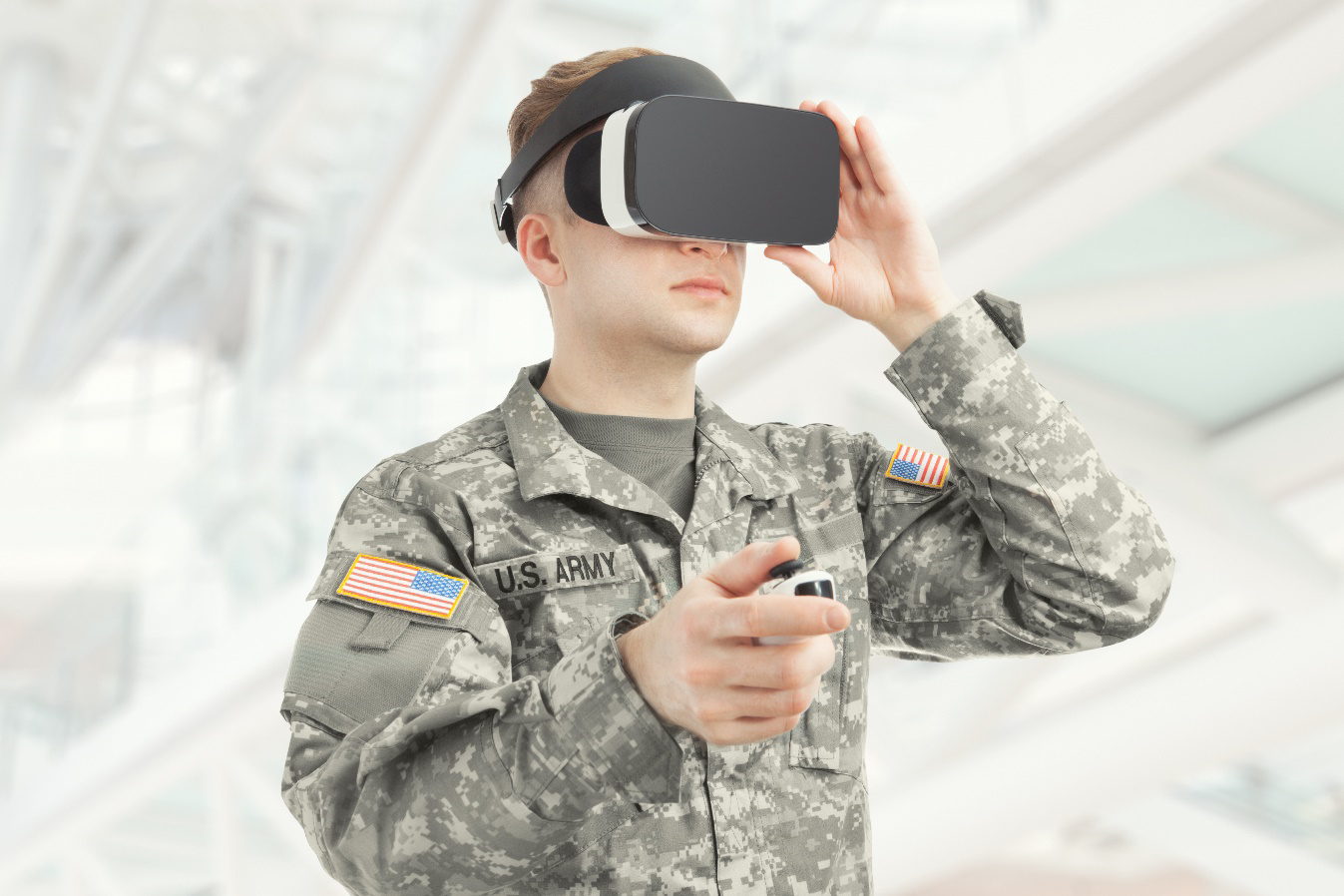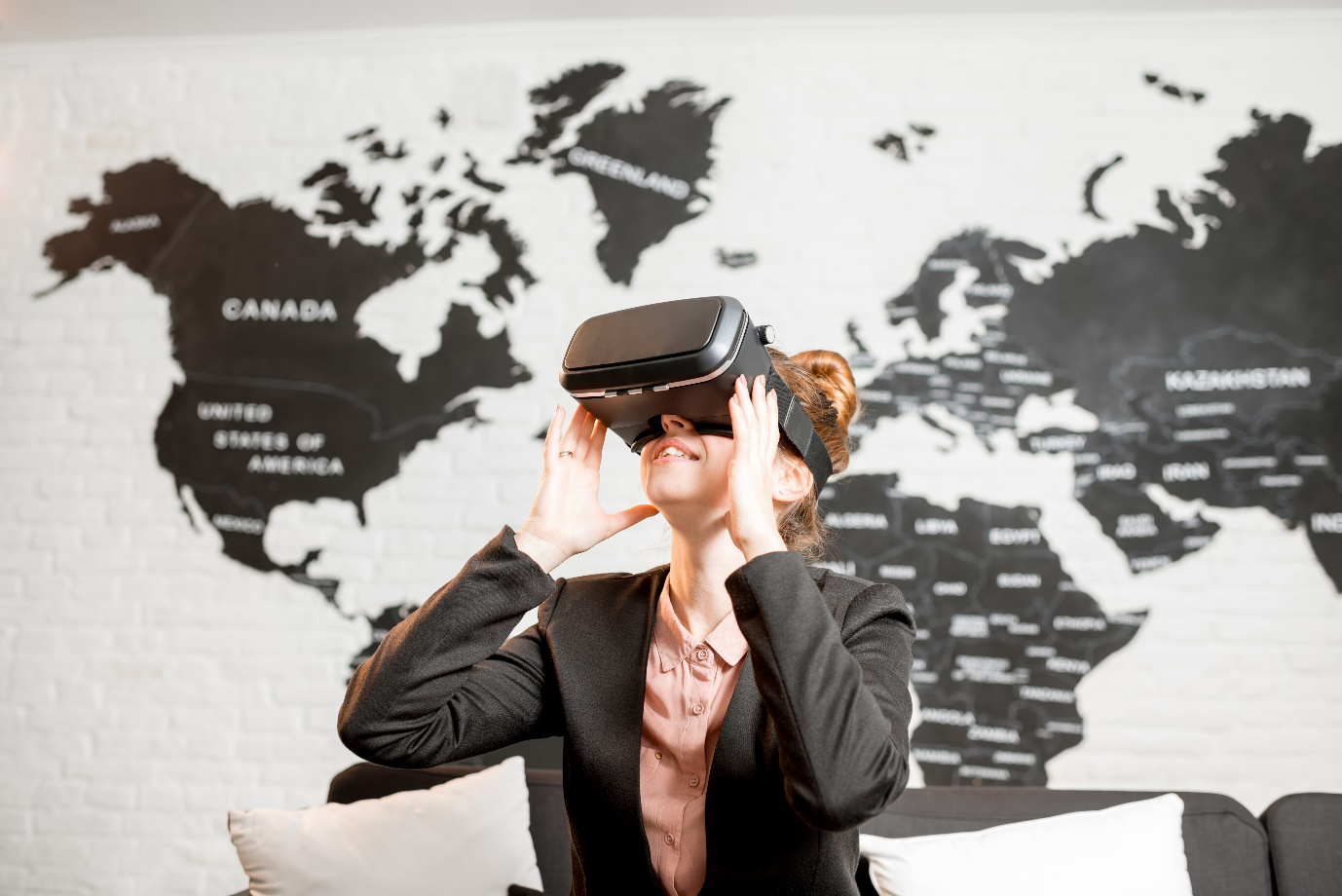You’re standing in a meeting room ready to present to a large group of your clients. Your heart is pounding, you look around the room as everyone settles into their seats. You see your presentation notes up on a screen and read through them to remind yourself of the points you need to make. Everyone settles in, looks at you and you begin your presentation. This is the 6th time that you have done this presentation and you are at a stage where it is almost becoming second nature. The nerves are still there but they are less intense compared to your first go and you feel much more confident about presenting.
How is this so? How are you able to practice in front of your clients and experience an important presentation prior to it taking place? This is the magic of virtual reality (VR).
VR provides you with the opportunity to experience a situation before it happens in real life. It transports you to an imaginary world and helps your learner adapt to real life situations through virtual surroundings offering an immersive learning experience (Sujatha, 2017).
Think about the ways you could utilise this technology, the possibilities are endless. Your employee needing to experience a difficult conversation with a customer, a newly recruited fire fighter needing to experience what it is like inside a burning building or a new employee experiencing a tour of their new office building before they get there, the list goes on.
So, when is VR useful and how can you use it to benefit learning in your organisation?
1. When Learning will Benefit from Visual Data
When you use VR you can often forget that you are in an imaginary world and not experiencing reality. When you are designing a learning solution think about whether the learner would benefit from experiencing and practicing the real-life situation before they encounter it. This can be useful for high risk situations where errors could create negative consequences. VR can provide the learner with a safe environment to practice in, where they can still experience the emotions and visuals of what the experience is like though won’t experience significant repercussions if something goes wrong. Think military flight simulations, medical procedures and other potentially dangerous scenarios.

Example of VR being used to train the military
2. High Pressure/Emotional Situations
There are certain learning solutions that would benefit from your learner feeling the emotion and pressure of a certain situation. You can provide someone with as many guidebooks and notes on how to deal with an angry customer though will they gain an understanding of how their emotions may impact them in the actual situation? Immersing your learner in the situation allows them to prepare themselves for what it will be like and will result in less surprises and emotional reactions when the time comes.
Also consider someone training to become a surgeon. Their first experience of surgery will be likely to bring on nerves. They will be put into a fast-paced environment that will require them to concentrate and communicate well despite the distractions of nurses talking, machines beeping, and surgery equipment being passed around the room. VR can allow them to experience that and familiarise themselves with that scenario prior to it happening.

Example of VR being used for a surgery scenario
When you use VR you can often forget that you are in an imaginary world and not experiencing reality. When you are designing a learning solution think about whether the learner would benefit from experiencing and practicing the real-life situation before they encounter it. This can be useful for high risk situations where errors could create negative consequences. VR can provide the learner with a safe environment to practice in, where they can still experience the emotions and visuals of what the experience is like though won’t experience significant repercussions if something goes wrong. Think military flight simulations, medical procedures and other potentially dangerous scenarios.
Example of VR being used to train the military
2. High Pressure/Emotional Situations
There are certain learning solutions that would benefit from your learner feeling the emotion and pressure of a certain situation. You can provide someone with as many guidebooks and notes on how to deal with an angry customer though will they gain an understanding of how their emotions may impact them in the actual situation? Immersing your learner in the situation allows them to prepare themselves for what it will be like and will result in less surprises and emotional reactions when the time comes.
Also consider someone training to become a surgeon. Their first experience of surgery will be likely to bring on nerves. They will be put into a fast-paced environment that will require them to concentrate and communicate well despite the distractions of nurses talking, machines beeping, and surgery equipment being passed around the room. VR can allow them to experience that and familiarise themselves with that scenario prior to it happening.
Example of VR being used for a surgery scenario
3. If your Learner needs to Preview a Space
Rather than new employees showing up to their new workspace and being clueless about where they sit, where the break room is, where the directors are situated and how to find the toilets, why not give them a virtual tour prior to their first day? This is a great way for your learner to become familiar with an environment prior to their arrival so that they are set for success.
You can use virtual tours for a variety of applications. If a new employee starts in a local government organisation you could show them around their city so that they are familiar with what their organisation offers to the public and this will also enable them to become familiar with the key locations in the area.

Example of a new employee experiencing a virtual tour of their office
4. People Introductions
I was working with an organisation who wanted their new employees to become familiar with the leaders in a raw and authentic way. These leaders had a busy work schedule and were not always able to attend the induction program to meet and greet new inductees on their first day. We came up with the idea to film these leaders in their office and have them talk about themselves as well as walk around and point to important plans and goals in their office. This created the opportunity for every single new employee to ‘virtually’ visit the office of each leader in the organisation. This enabled them to gain a high-level understanding of who they are as a person as well as view and hear the goals of the organisation. This is also a great option for organisations that are geographically spread across multiple locations.

Example of a VR meet and greet with a leader
Now that we have looked at effective and practical ways to incorporate VR, I will address the elephant in the room, cost. Discussions around implementing VR technology in organisations can spark ‘cost’ concerns. Don’t let this put you off, there are ways around this. You can purchase cost effective cardboard VR headsets that eliminate the need to overspend on each headset. The cost of VR can be tailored to your needs and there are a variety of ways to implement VR in your organisation, some more expensive than others.

Example of Cost-Effective Cardboard Headset
Have you tried out VR learning solutions at your organisation? We would love to hear what you have come up with or if you are interested in this form of learning. I hope this added value to your craft and inspired you to create learning solutions that are so immersive the learner is often unable to tell the difference between the virtual and realistic world.
References
Sujatha, B. (2017). Benefits of Virtual Reality in eLearning and Development. Retrieved from: https://blog.commlabindia.com/elearning-design/virtual-reality-benefits-in-elearning
Rather than new employees showing up to their new workspace and being clueless about where they sit, where the break room is, where the directors are situated and how to find the toilets, why not give them a virtual tour prior to their first day? This is a great way for your learner to become familiar with an environment prior to their arrival so that they are set for success.
You can use virtual tours for a variety of applications. If a new employee starts in a local government organisation you could show them around their city so that they are familiar with what their organisation offers to the public and this will also enable them to become familiar with the key locations in the area.
Example of a new employee experiencing a virtual tour of their office
4. People Introductions
I was working with an organisation who wanted their new employees to become familiar with the leaders in a raw and authentic way. These leaders had a busy work schedule and were not always able to attend the induction program to meet and greet new inductees on their first day. We came up with the idea to film these leaders in their office and have them talk about themselves as well as walk around and point to important plans and goals in their office. This created the opportunity for every single new employee to ‘virtually’ visit the office of each leader in the organisation. This enabled them to gain a high-level understanding of who they are as a person as well as view and hear the goals of the organisation. This is also a great option for organisations that are geographically spread across multiple locations.
Example of a VR meet and greet with a leader
Now that we have looked at effective and practical ways to incorporate VR, I will address the elephant in the room, cost. Discussions around implementing VR technology in organisations can spark ‘cost’ concerns. Don’t let this put you off, there are ways around this. You can purchase cost effective cardboard VR headsets that eliminate the need to overspend on each headset. The cost of VR can be tailored to your needs and there are a variety of ways to implement VR in your organisation, some more expensive than others.
Example of Cost-Effective Cardboard Headset
Have you tried out VR learning solutions at your organisation? We would love to hear what you have come up with or if you are interested in this form of learning. I hope this added value to your craft and inspired you to create learning solutions that are so immersive the learner is often unable to tell the difference between the virtual and realistic world.
References
Sujatha, B. (2017). Benefits of Virtual Reality in eLearning and Development. Retrieved from: https://blog.commlabindia.com/elearning-design/virtual-reality-benefits-in-elearning





0 Comments
We'd love to hear from you. Send us a message and connect!
Emoji